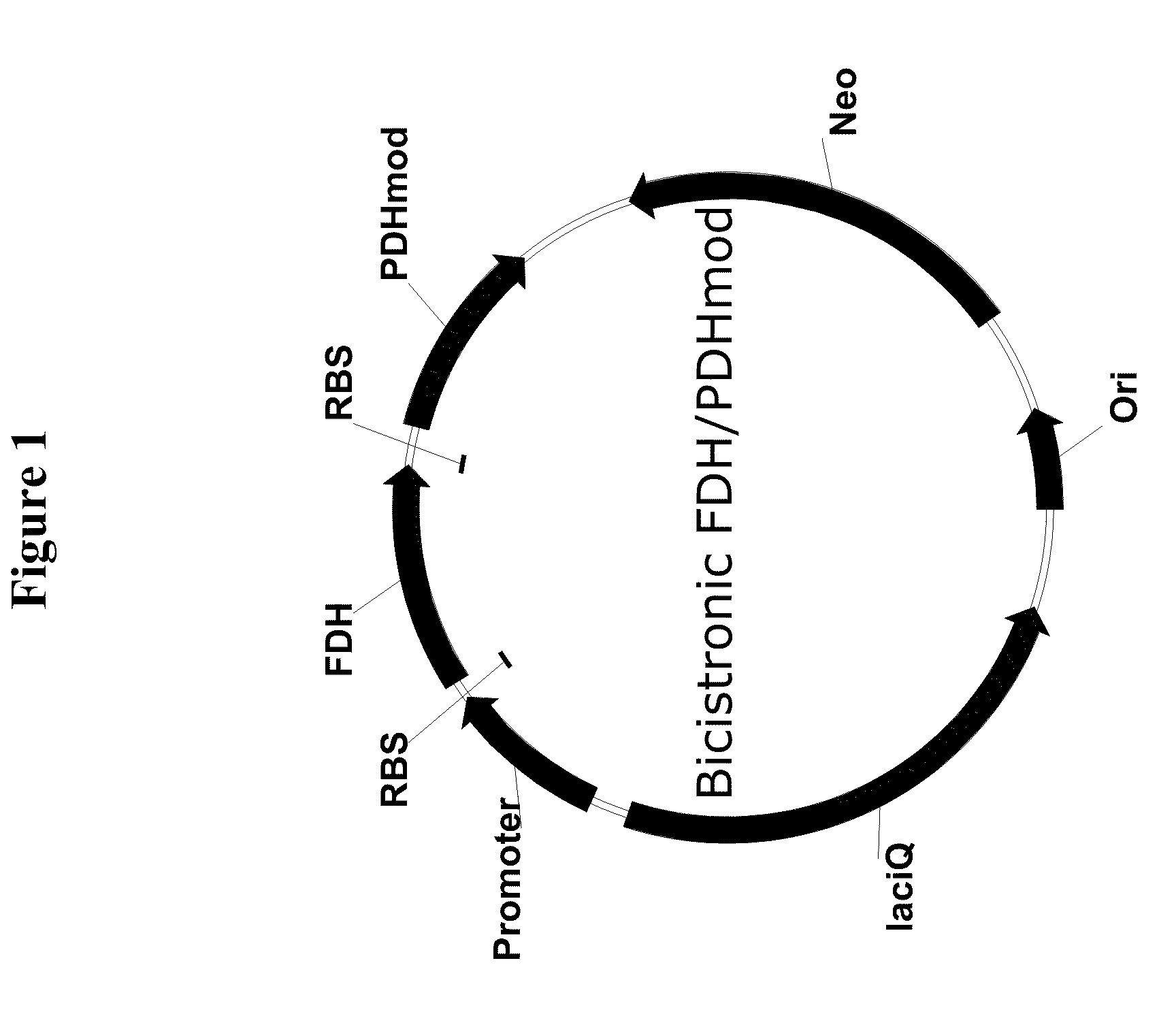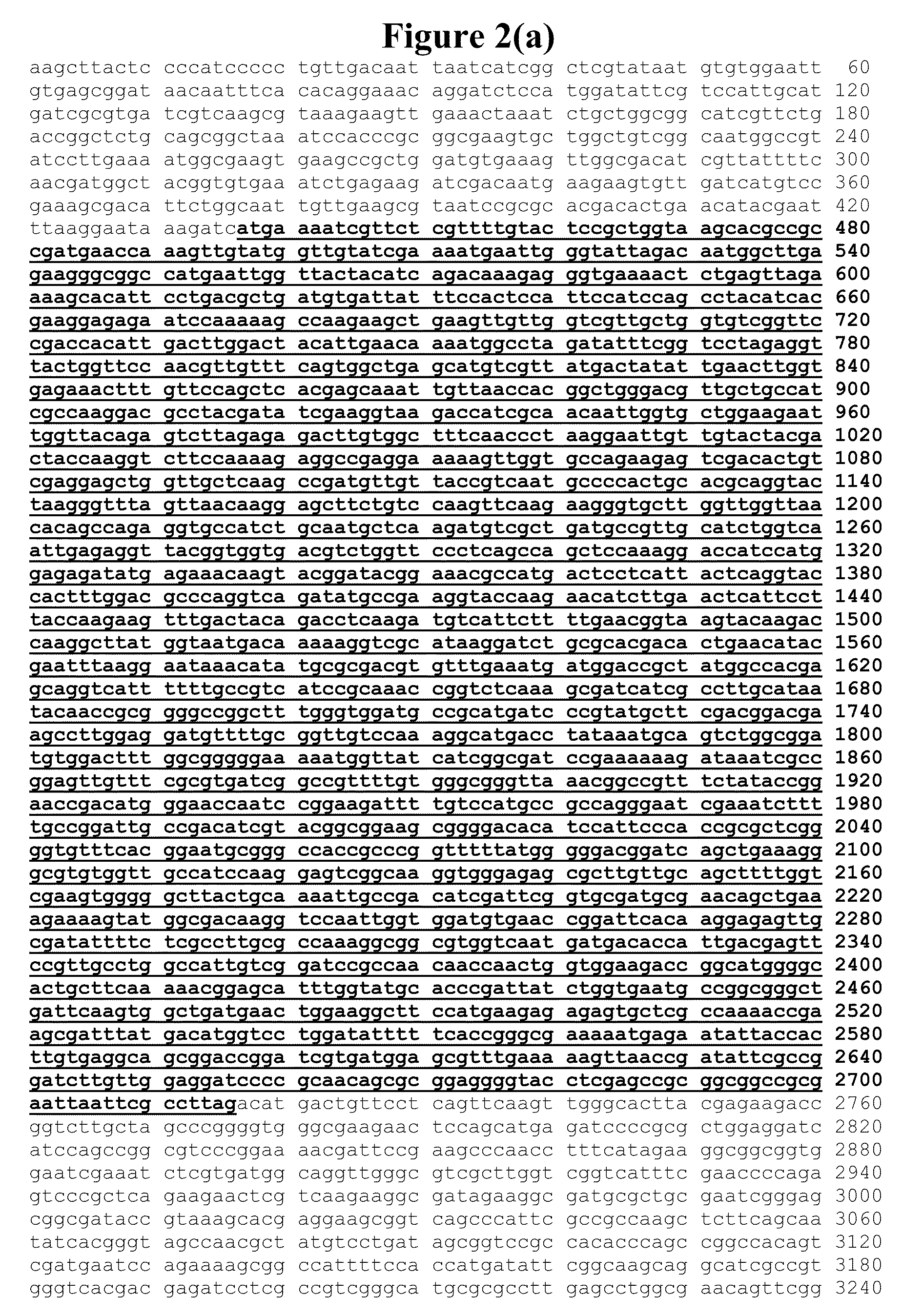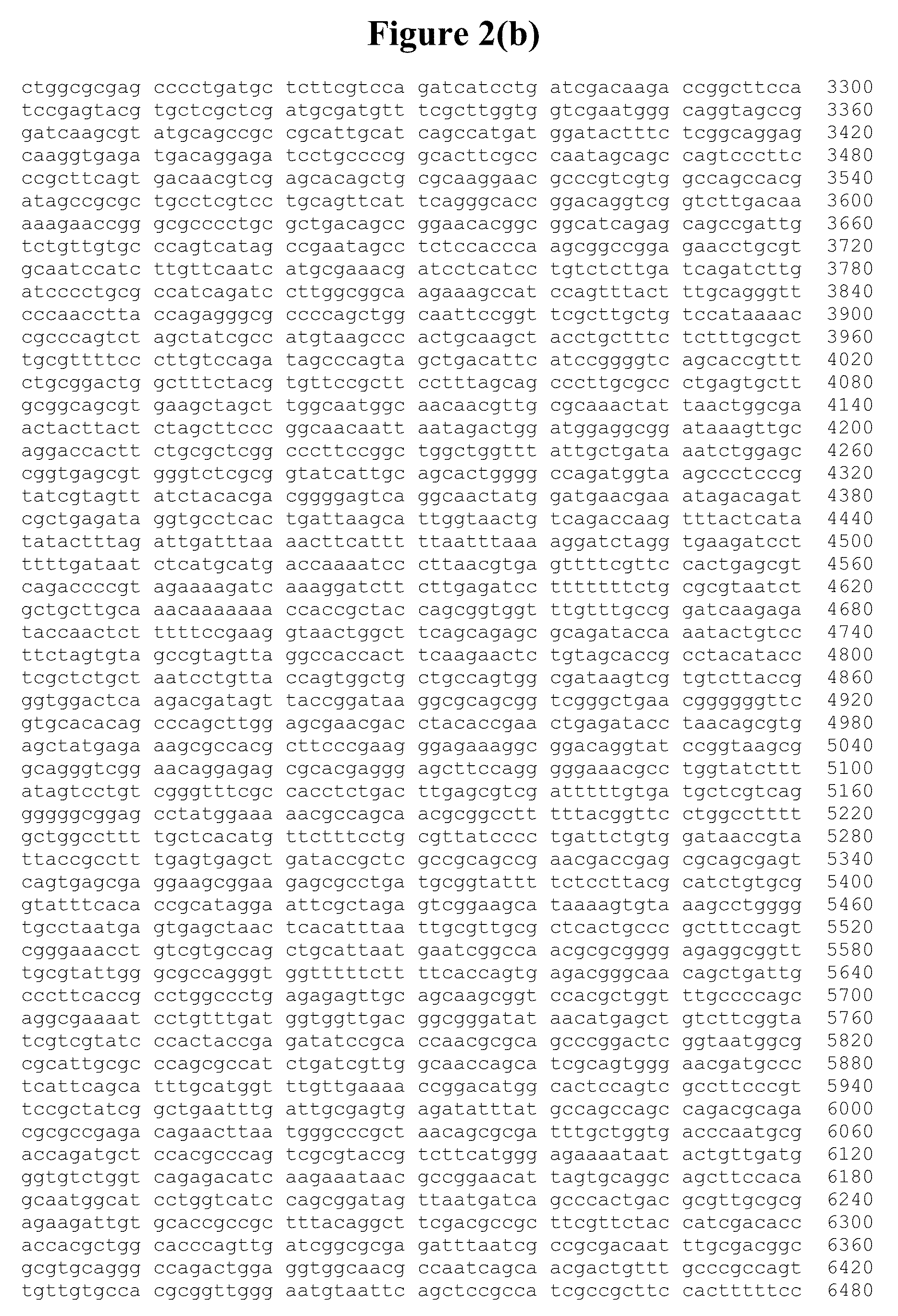Genetically stable plasmid expressing PDH and FDH enzymes
a plasmid and gene-stabilizing technology, applied in the field of plasmids, can solve the problems of fdh and pdh enzyme degradation too quickly for continual therapeutic use, previous attempts to express fdh and pdh using a single plasmid containing two identical tandem promoters, and achieve limited success
- Summary
- Abstract
- Description
- Claims
- Application Information
AI Technical Summary
Benefits of technology
Problems solved by technology
Method used
Image
Examples
example 1
Construction of the Bi-Cistronic FDH / PDHmod Plasmid
[0149]The bi-cistronic FDH / PDHmod plasmid was constructed by the insertion of a PCR amplified fragment containing the PDHmod gene with a 5′ ribosome binding sequence (SEQ ID NO: 3) into the pBMS2000-PPFDH-PDHmod plasmid from which the PDHmod gene and its corresponding promoter had been removed. The pBMS2000-PPFDH-PDHmod plasmid was originally disclosed in U.S. Pat. No. 7,420,079, with its pre-curser, the pBMS2000 plasmid, originally disclosed in U.S. Pat. No. 6,068,991. Both of these patents are herein incorporated by reference.
[0150]The pBMS2000-PPFDH-PDHmod plasmid was digested with BamHI and Nod restriction enzymes to remove the PDHmod gene and its promoter. The digested DNA was separated on an agarose gel and the 5.5 Kb fragment was isolated using the QIAGEN® gel extraction procedure.
[0151]A forward primer, pdhmod1f (5′-AAGCGAGATCTGCGCACGACACTG-3′; SEQ ID NO: 6) was designed to amplify the PDHmod sequence with the 5′ ribosome bi...
example 2
Confirmation of Stability of Bi-Cistronic FDH / PDHmod Plasmid
[0154]One frozen vial of the E. coli host JM110 transformed with the bi-cistronic plasmid was thawed on ice and 100 μL inoculated to 20 mL of LB medium with 30 μg / mL kanamycin and incubated overnight at 30° C., 250 rpm. The cultures were transferred an additional 9 times to a fresh 20 mL volume of LB+30 μg / mL kanamycin and incubated 8-20 h at 30° C., 250 rpm. The plasmid DNA was isolated from the final 20 mL culture using a QIAGEN® midi plasmid kit. The plasmid was digested with EcoRI restriction enzyme and analyzed on an agarose gel (FIG. 3). A single band between the 6 and 7 Kb molecular weight markers was observed, the expected size for an intact linearized plasmid. No other bands are observed on the gel, indicating that the plasmid was genetically stable.
example 3
Fermentation of E. coli Transformant with Bi-Cistronic FDH / PDHmod Plasmid
[0155]pBMS2000-FDH / PDHmod was transformed into E. coli JM110 and plasmid DNA was extracted and confirmed with the correct restriction enzyme digest pattern. JM110(pBMS2000-FDH / PDHmod)+ was fermented in BMS medium (0.5% yeast extract, 0.22% glucose, 0.7% potassium phosphate (dibasic), 0.1% citric acid monohydrate, 0.17% ammonium sulfate, 0.003% ferrous sulfate heptahydrate, 0.23% magnesium sulfate heptahydrate, and 30 μg / mL kanamycin sulfate. For 4,000-L fermentor, the inoculum was prepared as follows: 1 mL of frozen JM110(pBMS2000-FDH / PDHmod)+ was thawed and added to a 600-L fermentor containing 400 L BMS medium with 30 μg / ml kanamycin. The fermentor was operated at 30° C., with an agitation of 150 rpm (revolution per minute), an aeration of 80 Lpm (liter per minute), and a head pressure of 7 psi for 21 hours. When OD600 reached ˜1.1, 75 L of culture was transferred to a 4,000-L fermentor containing 1,700 L BMS...
PUM
| Property | Measurement | Unit |
|---|---|---|
| pH | aaaaa | aaaaa |
| melting temperature | aaaaa | aaaaa |
| melting temperature | aaaaa | aaaaa |
Abstract
Description
Claims
Application Information
 Login to View More
Login to View More - R&D
- Intellectual Property
- Life Sciences
- Materials
- Tech Scout
- Unparalleled Data Quality
- Higher Quality Content
- 60% Fewer Hallucinations
Browse by: Latest US Patents, China's latest patents, Technical Efficacy Thesaurus, Application Domain, Technology Topic, Popular Technical Reports.
© 2025 PatSnap. All rights reserved.Legal|Privacy policy|Modern Slavery Act Transparency Statement|Sitemap|About US| Contact US: help@patsnap.com



